Washington State offers residents and visitors stunning mountain ranges, lakes, and beaches. Half of the entire state is made up of forest lands, which has earned it the top spot as the country’s largest lumber producer. Its most populated city, Seattle, is home to the Space Needle, Pike Place Market, and the Seahawks. Still, no matter where you go in this state, there are tiny, often unnoticed creatures also inhabiting the environment — spiders! While there are a variety of spider species to explore in the state of Washington, we’ll focus specifically on five black spiders in this article.
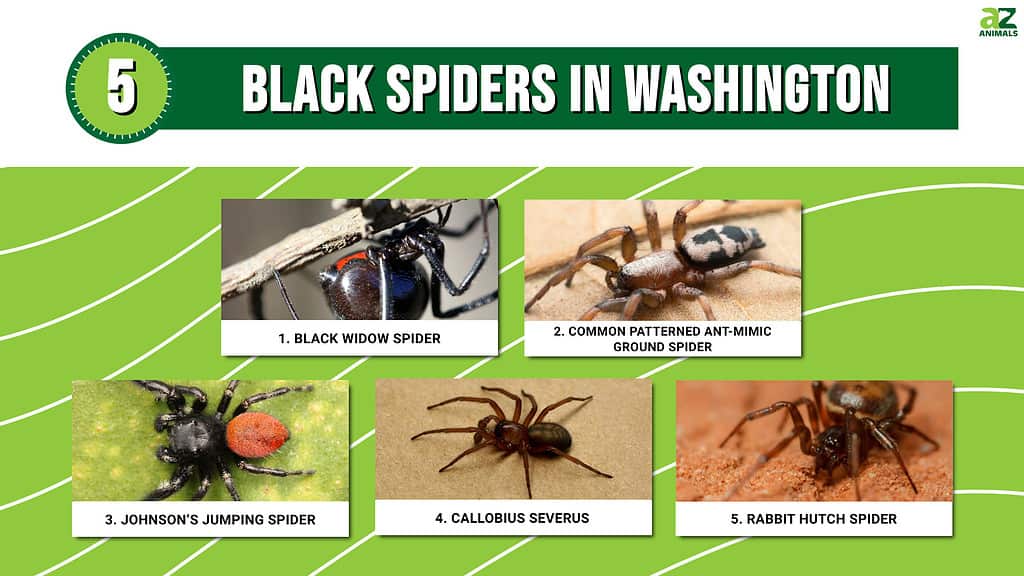
5 Black Spiders In Washington
1. Black Widow Spider
Scientific Name: Latrodectus
Black widows are frequently spotted in the eastern region of Washington state. There are some in the western region, but they’re more concentrated in the eastern part. The female black widows are known for their powerful venom but don’t typically display aggression. If they do, they’re likely guarding their eggs; otherwise, they choose to flee in the presence of a threat. These spiders are black and have a sheen to them.
The distinctive marking on their belly is hourglass-shaped and bright red or more of a yellow/orange color. Sometimes the hourglass marking is clear, but other times, it appears more like a dot or two separate markings. The females grow larger than the males, reaching about half an inch in length. They are often found in cluttered areas with little to no traffic, like under eaves or hanging around water meters. If they’re indoors, they look for similar cluttered areas like cellars or crawl spaces. Their webs are messy, like the chaotic environments they prefer.

Black widows are among the black spiders that live in Washington state.
©Paul Sapiano / CC BY 2.0 – License
2. Common Patterned Ant-Mimic Ground Spider
Scientific Name: Sergiolus montanus
This ground spider species is usually found indoors, particularly at the start of the summer season in May. They are black, brown, gray, and red, and when not indoors, they may gravitate toward artificial structures or high foliage. They are known for their bright patterns and their uncanny resemblance to ants. Not so much true ants, however. They look more like velvet ants. When the female spiders have eggs, they set up a base camp with a nest. After that, however, they’re usually wandering, living more of a nomadic lifestyle. Instead of setting up webs to catch prey like many other spiders, they actively hunt their prey down.
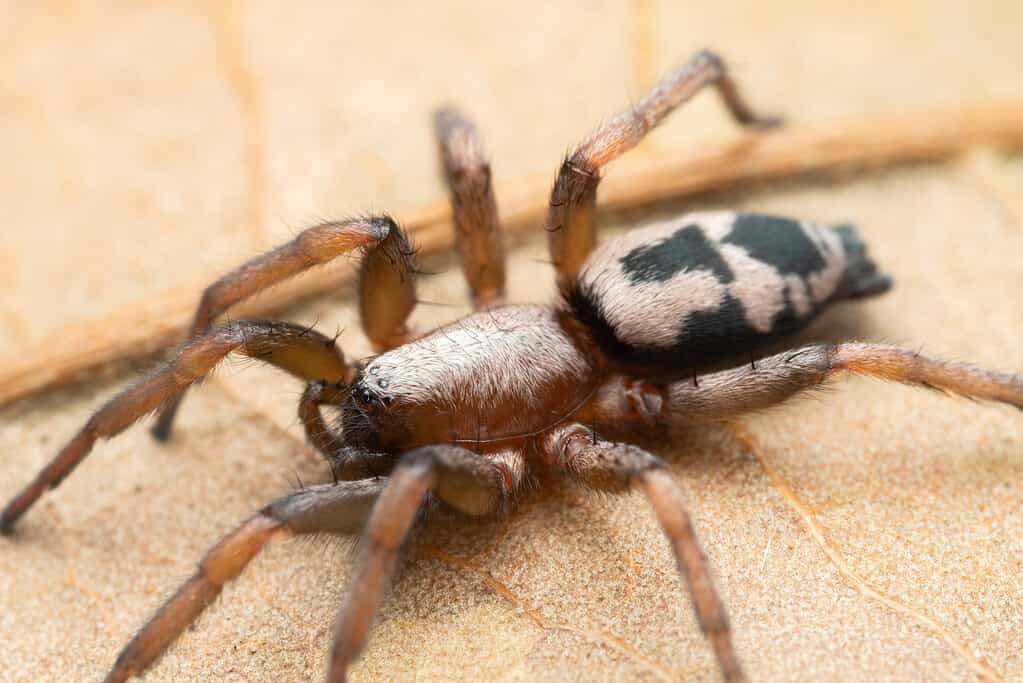
Ant-mimic spiders are famous for their bright patterns and their uncanny resemblance to ants.
©Marshal Hedin from San Diego, USA, CC BY-SA 2.0 via Wikimedia Commons – License
3. Johnson’s Jumping Spider
Scientific Name: Phidippus johnsoni
The Johnson’s jumping spider is usually spotted outdoors during the month of May when summer arrives. These spiders inhabit the western part of North America and are also referred to as red-backed jumping spiders. Their primary colors are black, gray, and red. They are tiny, growing only to about a centimeter long. The female and male spiders have a distinctive red belly, but there’s a differentiator — the female has a black stripe that cuts through her abdomen.
Aside from this brightly colored part of their bodies, the rest of this spider’s body is primarily black. Johnson’s jumping spiders weave their webs to create cylindrical nests. They prefer environments close to the ground, like under rocks. Sometimes, they use grape vines to set up their little nests. Their food sources consist of insects, but they also go after other spiders (and sometimes, the females snack on the males!).
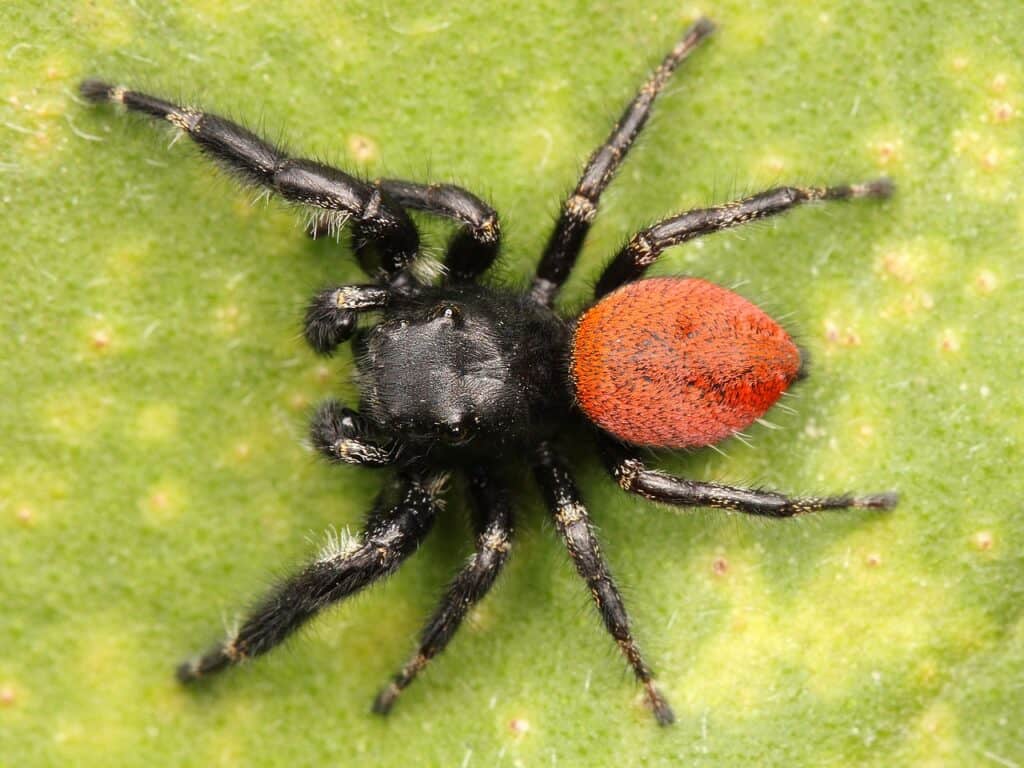
Aside from the red belly, the rest of the Johnson’s jumping spider’s body is primarily black.
©Kaldari / CC0 via Wikimedia Commons – License
4. Callobius severus
Scientific Name: Callobius severus
These spiders are primarily black, brown, and red. Their dark, blackish abdomens are decorated with fine hairs, and their legs are dark brown, often appearing to have a reddish tint. The females are larger than the males, but the males can be distinguished by their sizable, lengthy palps. They primarily spend their time in the outdoors, occasionally venturing their way indoors. They grow to about ¾ inches and are most commonly seen at the tail end of spring and the first month of summer. Although they are spotted under debris outdoors (like loose bark), they frequently hang out around artificial structures. Callobius severus looks similar to the dangerous hobo spider, but it is harmless.
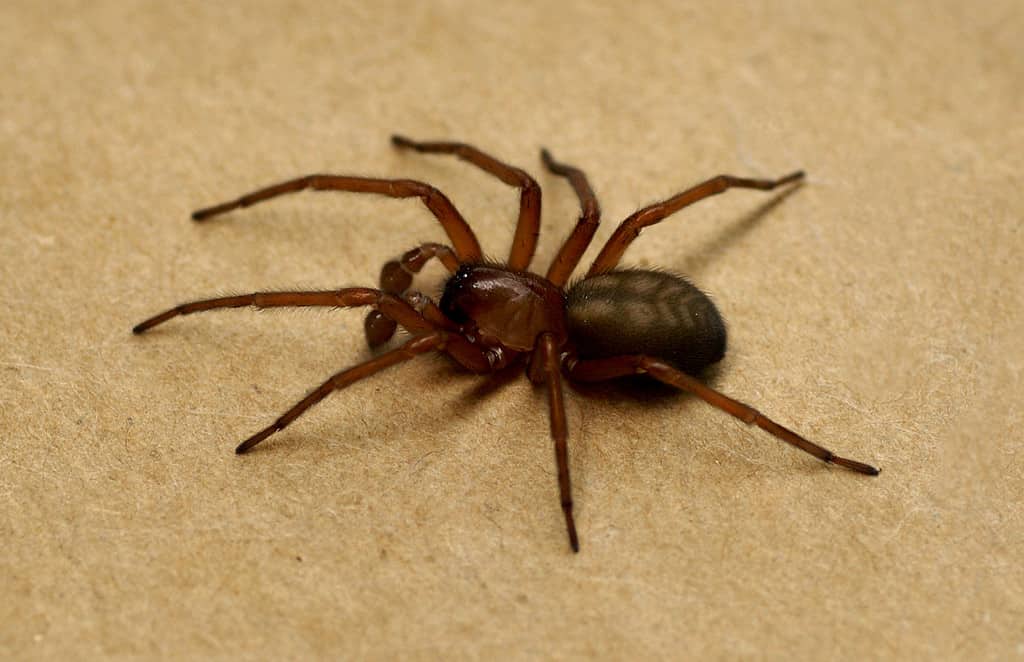
Native to the Pacific North West region of North America,
Callobius severusis one of the most common black spiders in the state of Washington.
©KirinX, CC BY 3.0 <https://creativecommons.org/licenses/by/3.0>, via Wikimedia Commons – License
5. Rabbit Hutch Spider
Scientific Name: Steatoda bipunctata
The rabbit hutch spider is often spotted spending its time indoors in semi-abandoned spaces like cellars and sheds. Its common name indicates its tendency to seek shed-like environments like rabbit hutches. Its primary colors are black, brown, and tan. This spider may be mistaken for the more dangerous black widow spider because of its bulbous body, but its coloration is different. The roundest part of the body is brownish with tan lines on the edges and down the center. The legs are black and brown, and while the body is often brown, it can also be quite dark, appearing almost black. This is why at first glance, they may appear like black widows. However, while black widows have a tell-tale red hourglass marking, rabbit hutch spiders have a marking that resembles an infinity symbol.
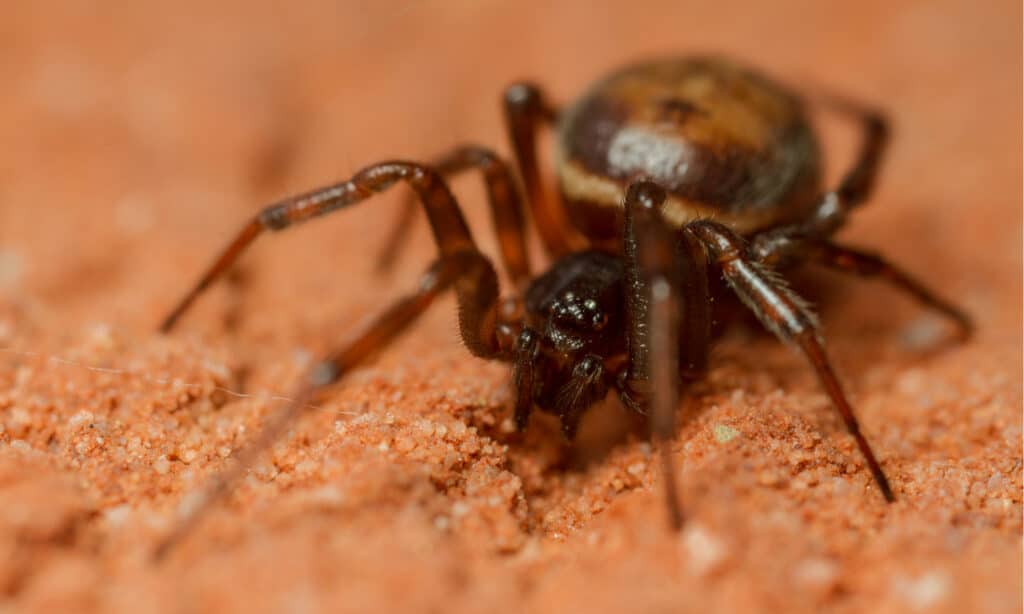
The rabbit hutch spider has a tendency to seek shed-like environments like rabbit hutches.
©thatmacroguy/Shutterstock.com
The photo featured at the top of this post is © Peter Yeeles/Shutterstock.com
Thank you for reading! Have some feedback for us? Contact the AZ Animals editorial team.






